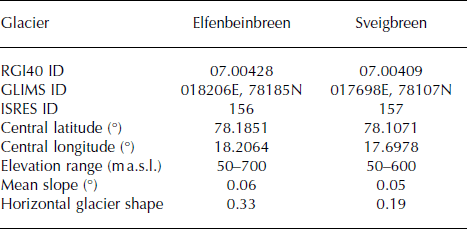

Compiled and made available by the international GLIMS community and the National Snow and Ice Data Center, Boulder CO, U.S.A.

GLIMS and NSIDC (2005, updated 2013): Global Land Ice Measurements from Space glacier database.

The GLIMS Geospatial Glacier Database: a New Tool for Studying Glacier Change. The Randolph Glacier Inventory: a globally complete inventory of glaciers. Miles, Geir Moholdt, Nico Mölg, Frank Paul, Valentina Radic, Philipp Rastner, Bruce H. Gardner, Jon-Ove Hagen, Regine Hock, Georg Kaser, Christian Kienholz, Evan S.
Glims and nsidc download#
Users can also directly access and download the entire GLIMS Data which is available in shapefile format. The RGI is currently on version 3.2 and users must register to gain access to the database. More information about the Randolph Glacier Inventory is available from the GLIMS: Global Land Ice Measurements from Space web site. The more accurate inventory of the world’s glaciers will allow scientist to better model glacier-climate interactions. The RGI found more than 200,000 glaciers covering a collective area of about 730,000 square kilometers. These include integrating more regionally accurate glacier inventories such as data available from the International Centre for Integrated Mountain Development in Nepal, obtaining outlines for the roughly 3,000 glaciers in North Asia which currently only has information for the area and location, pulling more recent outline information for the 8% of the database that predates 1999, and adding information about topography and hypsography. While this global database of glaciers represents the first comprehensive inventory, the paper about the project notes that there are several outstanding tasks. The Randolph Glacier Inventory: a globally complete inventory of glaciers“. More detail about the attribute information is detailed in the PDF, “Supplementary information for Each glacier outline was assigned twelve attributes including an ID, the lat/long of the centroid of the glacier, the date of the image from which the glacier was outlined, the type of the glacier, and the area of the glacier. Other imagery sources included ASTER, IKONOS, and SPOT 5 high resolution imagery. The Landsat archives formed the dominant satellite imagery source for the undertaking. Most of the glacier outlines were extracted from freely available satellite imagery. A review of the project, methodology for creating the inventory of glaciers, and next steps was recently published in the Journal of Glaciology: “ The Randolph Glacier Inventory: a globally complete inventory of glaciers“. The completed dataset is known as the Randolph Glacier Inventory (RGI). The GIS dataset was rapidly developed in less than two years in order to meet the requirements of the Fifth Assessment of the Intergovernmental Panel on Climate Change (IPCC). An international group of seventy scientists hailing from more than eighteen countries have created the first global datasets of the world’s glaciers (not including the ice sheets of Greenland and Antarctica.


 0 kommentar(er)
0 kommentar(er)
